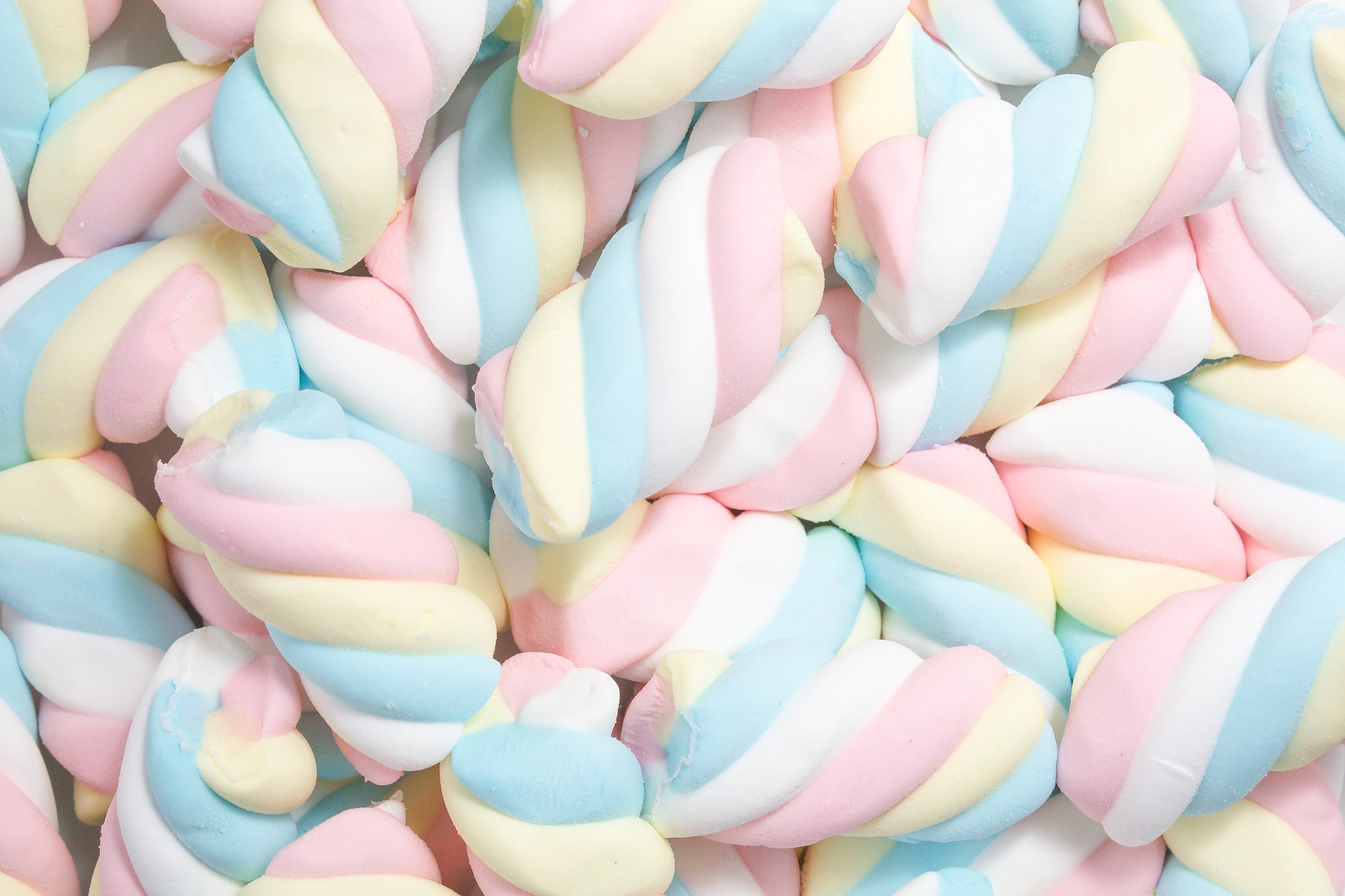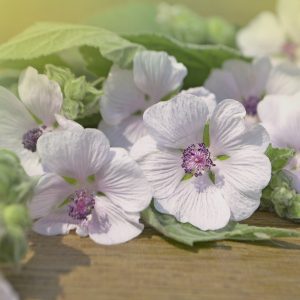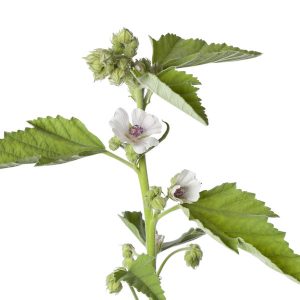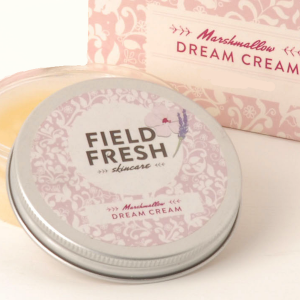
Marshmallow for skincare
Let’s get the picture straight right away. We don’t suggest getting a packet of fluffy sweets and pounding them into your skincare. The marshmallow we talk about is the beautiful, tall hedgerow and countryside plant.
- Characteristically pink, trumpety blooms.
- Large, rounded (slightly hairy leaves).
- A tall straight stem, full of the mucilage that was the original ingredient in marshmallows … and has long been known as a great skincare ingredient for softening and protecting.
Althaea officinalis
Mallow was grown as a medicinal plant in Roman times and it was considered a ‘cure-all’. It’s name Althaea comes from the Greek altha ‘to cure’. The plant gives its name to our sticky sweets. These were originally made using the mucilage from the stems of this plant; this mucilage is also used to make Middle Eastern halva.
Mallow
The name ‘mallow’ derives from the Old English ‘malwe’ meaning ‘soft’. It refers to the abundant mucilage, which is the useful skin-softening component. You’ll notice a similarity between the marshmallow plant and hollyhocks, they are related: ‘hoc’ is the Old English word for ‘mallow’.
Marshmallow Benefits for skincare
Marshmallow is great for skin softening and conditioning and long used traditionally for this purpose. Many other applications include treating irritations, boils, burns, sores, ulcers, wounds and inflammations.
Marshmallow is gentle enough to use on babies’ skin or sensitive skin while also being rejuvenating for older skins on the face or body.
It’s anti-inflammatory, antimicrobial and moisturising (helping to maintain levels of hyaluronic acid in the skin) and in hair products it can help nourish, detangle, condition and may counteract hair loss.
Parts to use
Leaves and roots. Make an infusion or maceration from the leaves and a decoction or maceration from the roots.
How to find, grow, harvest
My first attempts to find marshmallow growing wild were hampered and I was disappointed to find Nicholas Culpeper’s description:
‘Common mallows are generally so well known they need no description’.
So discovery has been something of a labour of love and I prize my sightings of marshmallow now, even though now I recognise it can be quite common when driving along country roads.
Typically found in damp conditions, so near streams, rivers and marshes. You’ll recognise it easiest when in bloom, pale flowers appear in late summer. It has no fragrance and dies right down in autumn. It has five-lobed roundish, soft leaves that are densely covered in hairs.

There is a saying that marshmallow grows only near a happy home.
Marshmallow in skincare
Here’s a recipe for a very simple marshmallow handcream.
For a more sophisticated skincare product, here’s our Marshmallow Dream Cream. Awarded ‘Best Facial Moisturiser’ in the Janey Loves Awards, it’s an overnight treat for your skin. And so easy to make fresh from the kit.






Hi Laura
Thanks! I loved this, have looked it up in German (Eibisch) and will be looking out to get it in my garden next year!
love Tricia
That’s great Tricia, good to hear. Good luck with growing it, do let me know how you get on.